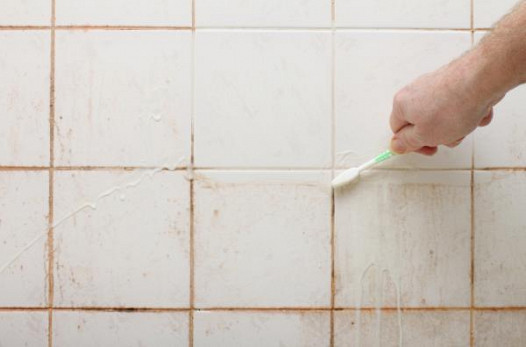Common Root Causes Of Water Damage in a Bathroom
Common Root Causes Of Water Damage in a Bathroom
Blog Article
Just how do you really feel on the subject of Common Causes of Water Damage in a Bathroom?

The washroom is exceptionally prone for damp buildup and also prospective water damage because of the frequent use of water in it. This write-up uses basic inspection strategies to assist finding water damage hazards.
The constant use water in the restroom makes it incredibly vulnerable for wet build-up and possible water damages. By examining it routinely, you can reduce water relevant damages.
The adhering to collection of assessments is simple to perform and also must be done when in every three months in order to maintain your washroom healthy and to stop possible water problems caused by the bathtub, the shower, pipe joints and also plumbing, sinks, cupboards, and the toilet
Do not forget doing these inspections and also be complete while performing them. Remember that these basic inspections can conserve you a lot of cash by supplying early signs for water damages
Bathtub and also Shower
The shower as well as bathtub call for special attention and also maintenance. Examine the ceramic tiles and change if split. Make sure that there is no missing out on grout in between the ceramic tiles. Inspect as well as replace broken caulking at joints where the wall surfaces meet the flooring or the bathtub. Blocked drains pipes and pipelines problems will certainly prevent the bathtub from drying out and may show serious issues under the bathtub. Talk to a professional right away to stop structural damages. Take notice of discolorations or soft locations around the bath tub walls as they may show an internal leak.
Plumbing
Signs for water damages are hard to spot given that most pipes are set up inside the wall surfaces.
Pay unique attention to flooring as well as wall surfaces moisture and spots as they might indicate an unnoticeable plumbing issue. Examine moisture levels in adjacent rooms also.
Sinks as well as Cabinets
Sinks and also closets are exposed to wetness as well as moisture day-to-day and are frequently ignored. Check regularly under the sink and on the counter top above it. Fix any kind of drip in the catch as it might recommend drain problems. Take a look around the sink, sluggish draining pipelines might show a blocked drain. Replace sink seals if they are broken or loose.
The Bathroom
The bathroom is a prone water joint. Examine the water lines and also look for leakages around the commode seat, in the tube, as well as under the water storage tank. If you find any kind of indicators of dampness on the flooring around the commode, look for leakages in the toilet edge as well as storage tank seals.
Know that hanging bathroom dish deodorants enhances the possibilities for blockages.
10 TIPS TO PREVENT WATER DAMAGE IN THE BATHROOM
The average household uses approximately 80-100 gallons of water per person per day. For a family of 4, that's almost 2,500 gallons of water a week! The largest portion of this consumption comes from bathroom use. Flushing the toilet uses the most water, followed by taking a shower or bath. With that much water running through the home, water damage in the bathroom is bound to happen. Knowing how to spot signs of a water leak is essential to preventing long-term damage. This guide provides you with tips to reduce the impact of water damage on your bathroom.
CAUSES OF BATHROOM WATER DAMAGE
Pipe breaks are the most common cause of water damage we see in our daily jobs. The age of a pipe plays a large role in a pipe break as well as corrosion. Over time, the metal begins to break down, allowing water to escape. Frozen pipe breaks are also a concern in the winter months. Toilet overflows caused by paper products or children flushing inappropriate items. Degraded caulking around the toilet or bathtub can allow water seepage, sometimes behind the fixture, into the subfloor or walls. Condensation forms when the water in a pipe is cooler than the air temperature. Beads of water form on the exterior of the pipes, sometimes so much so that the water begins to drip and pool below. Sink or shower backups created by poor drainage. HOW TO PREVENT WATER DAMAGE IN YOUR BATHROOM
Inspect your toilet supply line for worn or frayed hoses and replace them as needed. Winterize your plumbing to prevent a frozen pipe break. Use vent fans to prevent condensation that can lead to mold growth. Routinely check and replace degraded caulking around your toilet or bathtub. Increase the temperature in your toilet tank and insulate your pipes during the warm summer months to keep condensation from forming. Use child safety locks on the toilets. Flush only toilet paper. "Flushable" wet wipes are actually not good for your plumbing system. Additionally, feminine hygiene products should not be flushed. Prevent water from escaping the tub or shower. Make sure shower curtains are in good condition. Inspect shower doors and replace the seal strip if necessary. Wipe up any water that accumulates on the floor and use bath mats. Water left to sit can cause damage to the tiles and flooring. Refrain from using bath products containing heavy oils to avoid a clogged drain.

I ran across that review on Common Causes of Water Damage in a Bathroom while exploring the search engines. Be sure to take a moment to promote this blog posting if you liked it. Many thanks for your time. Visit us again soon.
About This Report this page